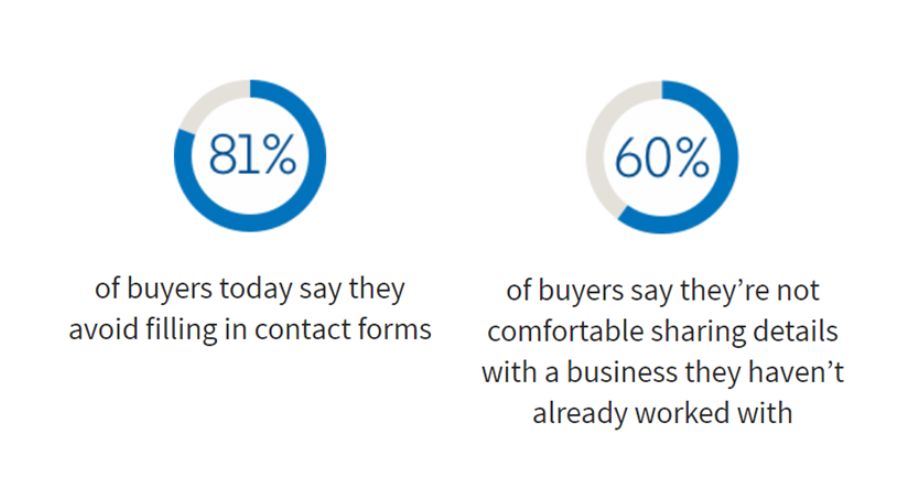
We’ve all done it – add item, go to basket, submit payment details, sit back and wait for your purchase to arrive; while the vendor in question has either a new customer, or a returning one showing some loyalty and providing valuable insight about their profile and buying behaviour.
However, it’s not that simple in B2B technology sales, especially if your latest piece of software is a six or seven figure purchase!
This is why B2B marketers focus their efforts on the buyer’s journey, which HubSpot describes as the following:
The buyer’s journey describes a buyer’s path to purchase. In other words, buyers don’t wake up and decide to buy on a whim. They go through a process to become aware of, consider and evaluate, and decide to purchase a new product or service.
The importance of Content Marketing
Content marketing is key here; serving up assets at the various stages of the buyer’s journey that, as HubSpot suggests, drives awareness, consideration and evaluation within your target audience. The ‘challenge’ is deciding which content you make freely available – aka ungated – and what is hidden behind a form – aka gated –which undoubtedly requires the audience to provide personal information (such as name, email, phone number, company name, etc.) in exchange for access to the content.
Let’s look at the benefits and key considerations within both strategies.
The benefits of ungated assets
Wider reach
Ungated content can be easily shared, linked to and discovered by a broader audience, which can help improve your brand awareness and reach.
Establish authority
By providing valuable content for free, you can establish yourself as a thought leader in your industry, which can help build trust and credibility within your target audience.
SEO Benefits
By publishing ungated content on your website, you can improve your website’s SEO and increase organic traffic to your site.
Higher engagement
Ungated content tends to have higher engagement rates, as it does not require any additional steps from the user to access and consume what’s being served.
The benefits of gated assets
Lead generation
By gating your content, you can capture the contact information of your target audience, which can be used for follow-up in further marketing campaigns and sales outreach activity.
Better quality leads
The leads generated from gated assets tend to be of a higher quality as the audience is deemed to show a genuine interest in your product / service by downloading your content.
Content personalisation
Gated assets allow you to tailor your content to your target audience’s needs and interests, which can help improve engagement and conversion rates.
Measure engagement
Track how many people have accessed your content, how long they spent on the page and which pages they viewed; this invaluable data can be used to measure the effectiveness of your content and help to optimise future campaigns, and also help with define your gating strategy.
To gate or ungate – that is the question…
All marketers will have their own opinion on this. I hazard a guess that the gate will be used when the campaign objective is labelled with lead generation and to provide sales and / or business development teams with prospects to follow up.
However, it’s seemingly not that straight forward any more given the following statistic:

(Source: LinkedIn – Five principles for building tech marketing strategies)
LinkedIn also proposes that such an approach needs an overhaul in the era of the anonymous buyer:
To generate leads more effectively, marketers have to flip their traditional marketing model and prioritise delivering value from the first touch, in order to generate higher quality leads later. By treating anonymous buyers as anonymous customers, they build the types of relationship that persuade them to open up about themselves. Moving beyond gated content as a default lead generation strategy is an important first step.
All of this indicates that the role of ungated content has never been more important. Not only does it let your potential customers easily consume relevant information – and in the process start building an element of loyalty and trust with your brand and/or product – but, as mentioned earlier, it also allows your core messages to be distributed to a much wider audience, via channels such as social media, podcasts and communities.
One rule does not fit all…
Unfortunately, there is no fixed rule about when and where gated and ungated content should be used in today’s digital marketing strategies. The savvier buyers become, the argument to gate less becomes more prominent. This means focusing your efforts on ungated content that delivers an excellent user experience, maximises its reach and has good SEO.
For gated content to be effective, getting the right content with the right people at the right time is important. A lot of today’s digital marketing require a need for testing and your gating content strategy is no different. For example, have you considered not making it compulsory to enter details in return for content? Try serving up a soft gate that allows the audience to navigate away from the form and continue to the content, but with the option to submit their details at the end.
There’s plenty of food for thought in this discussion – and the menu of considerations is likely to extend moving forward.
If you wanted support with your digital marketing strategies for your gated or ungated content, please get in touch with our team of experts. We would love to hear from you!